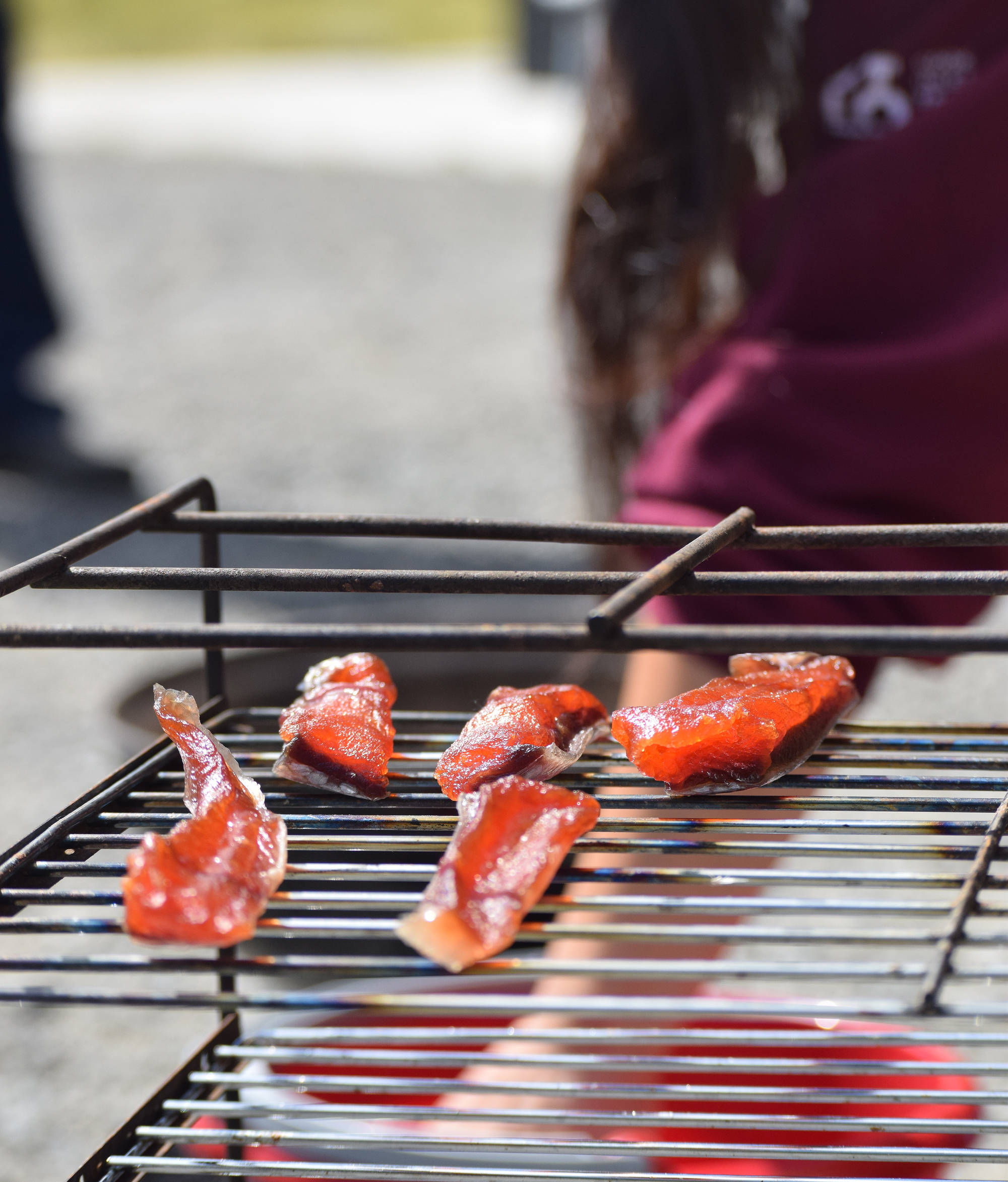Smoking salmon may not be as time-consuming as one may think.
Yes, it does pay to allow a lot of time to let the meat cure and smoke properly for that full flavor, but set up is simple.
The recent Fish Week celebration in Soldotna featured several community events and demonstrations for locals and visitors to feast their eyes and palettes on. A fish smoking show allowed local fishermen and culinary enthusiasts to learn the proper tools and techniques to smoking up tasty salmon in the traditional way.
In a demonstration led by Sandy Wilson, a Kenaitze Indian Tribe member, interested viewers got a full lesson in smoking fish from the right person.
Wilson has lived on the Kenai Peninsula her entire life, and learned from her parents and grandparents a lifetime of valuable skills and lessons in living off the land and the river.
“It’s about teaching your kids to fish,” Wilson explained. “Don’t give them a fish, rather teach them to fish for a lifetime.”
Wilson said her great-great-grandparents lived in what is now old town Kenai, and her ancestors left lessons for the next generation to carry on, lessons that would serve them in a life on the mouth of the Kenai.
“I remember going to my grandmas house all the time,” she said. “We’d help grandpa with a lot of things. I’ve taught all my kids.”
Wilson explained that the secret to delicious smoked salmon is the brining process. Start by soaking cut up strips of fish in a salty brine for 15 minutes. The brine is created by adding salt to a vessel of water, which Wilson said is salted enough when a potato dropped into the brine floats. The brine helps the curing process of the fish.
Wilson said reds are the type of salmon that her family always used, as a succulent and tender meat is perfect for smoking.
Once brined, the fish will need to either be placed in rows on a rack or hung by twine to a board. The trick to hanging fish strips lies in the direction they are hung. The lines on the side of the strips will need to point downward, meaning the fish are hung by the tail, helping to keep the meat secured by the twine and not allowed to slip through.
Smokehouses vary in size, with the bigger ones being outhouse sized that can hold 40 fillets, or about 20 total fish, and typically feature three or four vents on the upper flanks of the side. These bigger smokehouses require seven to 10 days of smoking.
“Big smokehouses are a cold smoke,” Wilson said.
The smallest smokehouses are cupboard size and can smoke as fast as four to six hours, although they hold less fish.
After that, the search begins for the proper smoking wood. Wilson said her family gathers beachwood for the smoking process, as the driftwood offers the best flavor and smoking qualities.
However, alderwood chips can be purchased from local stores to satisfy the smoking requirements, and Wilson demonstrated using alderwood chips gathered from the Pacific Northwest.
Gather the wood or woodchips on a concave pot and apply heat enough to light the chips aflame. Once lit, the flame can be extinguished to allow the smoke to really accumulate, and it is recommended to light it in a consistent circle around the bed of chips.
Wilson said it could take one hour for the smoke to start venting out the side of the smokehouse, which is a sign that things are moving along correctly.
After at least a week in the larger smokehouse, Wilson said the salmon can be canned or jarred, and in 1/2-pint jars, it is smart to put the fish in a pressure cooker for 90 minutes before, using 10 to 15 pounds of pressure.
The type of seasoning used in the jars vary based on preference. Wilson said her family always used jalapeños and a teaspoon of olive oil.
After that, all that’s left to do is sit back and enjoy summer with some homemade smoked salmon.

